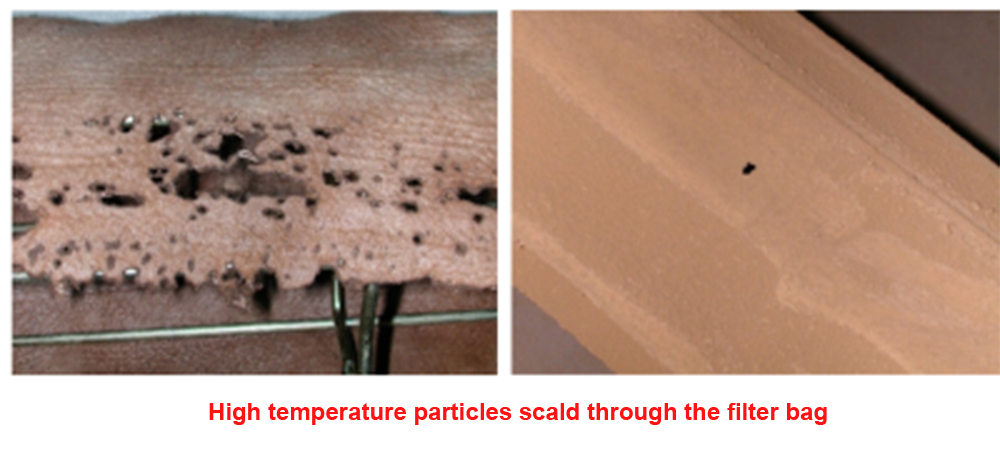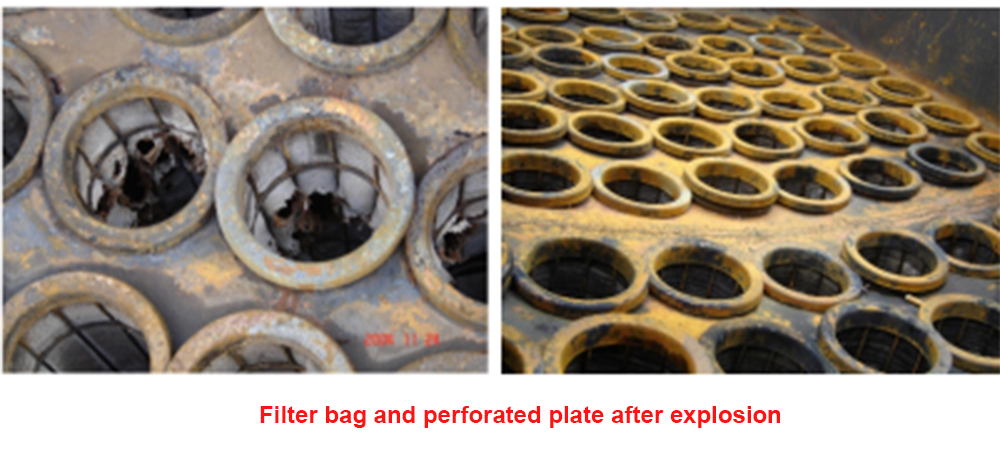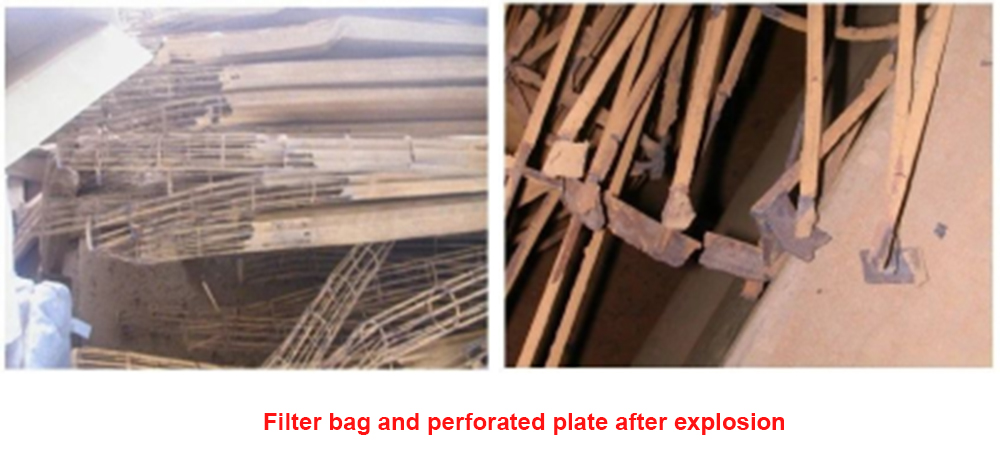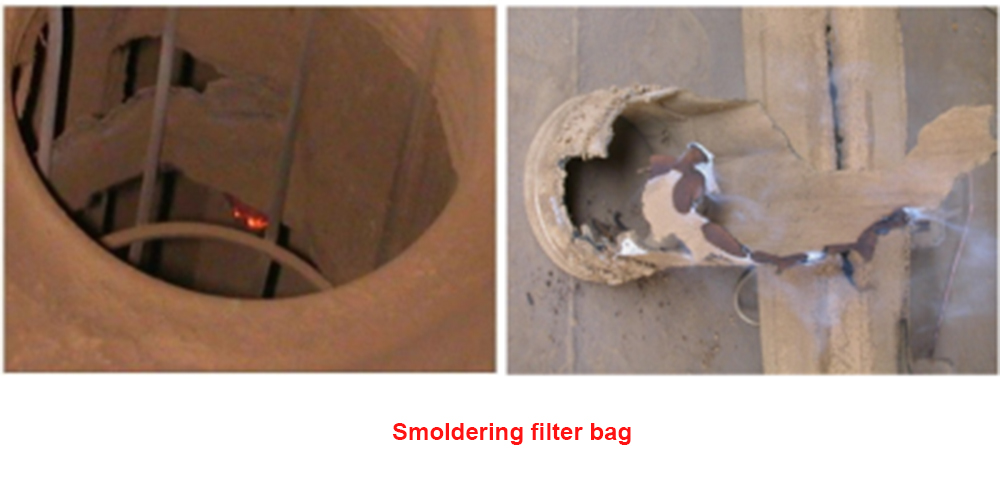Analysis of the burning problem of dust bag
Dec 28, 2021There are high-temperature particles of different sizes in the filtered high-temperature flue gas, and their temperature is greater than 400℃, which can not be detected by ordinary temperature detectors; most of the high-temperature particles will settle in the gravity sedimentation chamber, and some of them will pass through the flue gas at high speed with the airflow The pipe enters the dust collector. For polyester, polypropylene, acrylic, polyphenylene sulfide and other fiber filter bags, when the surface of the filter bag is less dusty, the high-temperature particles will burn through the filter bag to form irregular round holes; when the surface of the dust collection bag is more dusty, the high-temperature particles will not Scalding through the filter bag will form dark-colored baking marks on the filter bag.

②Combustibility and chargeability
Certain combustible and easily loadable dusts, such as coal powder, coke powder, alumina powder and magnesium powder, meet sparks in the air (usually caused by friction sparks, static electricity, etc.) under certain concentration and oxygen content. Sparks, combustible particles, etc.) will burn or explode. The shock wave generated at the moment of the explosion deforms the porous plate, bursts the filter bag, and instantly generates high temperature and fire to burn the dust bag. The flammability of dust is related to various factors such as particle size, composition, concentration, combustion heat and combustion speed. The smaller the particle size, the larger the specific surface area, and the easier it is to ignite.

③Dust storage
When dealing with high-temperature flue gas, a large amount of dust will accumulate in the ash hopper. If it is not cleaned up in time, the dust will accumulate heat in the ash hopper and increase the temperature. Too high temperature will bake the dust bag and cause the dust bag to harden or burn, or even burn the bag. For cages and ash hoppers, the dust in the chamber must be cleaned up in time at this time.

④Dust smoldering
When the dust on the surface of the flame-retardant fiber dust collection bag is oily and adhesive, it is easily ignited by high-temperature gas or particles. At this time, the flame-retardant fiber on the surface of the dust collection bag burns without an open flame, and the oily dust sticks to the surface of the dust collection bag It burns slowly and without an open flame. Generally, the burning traces are diffuse or wavy edges, and there are no traces of high-temperature baking.

2. Smoke
Improper control of high-temperature flue gas will cause large fluctuations in temperature. When the temperature exceeds the operating temperature of the dust bag. When it reaches the ignition point of the dust bag, the dust bag will burn and break.